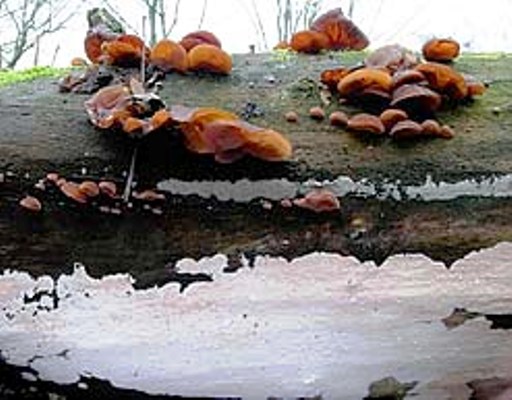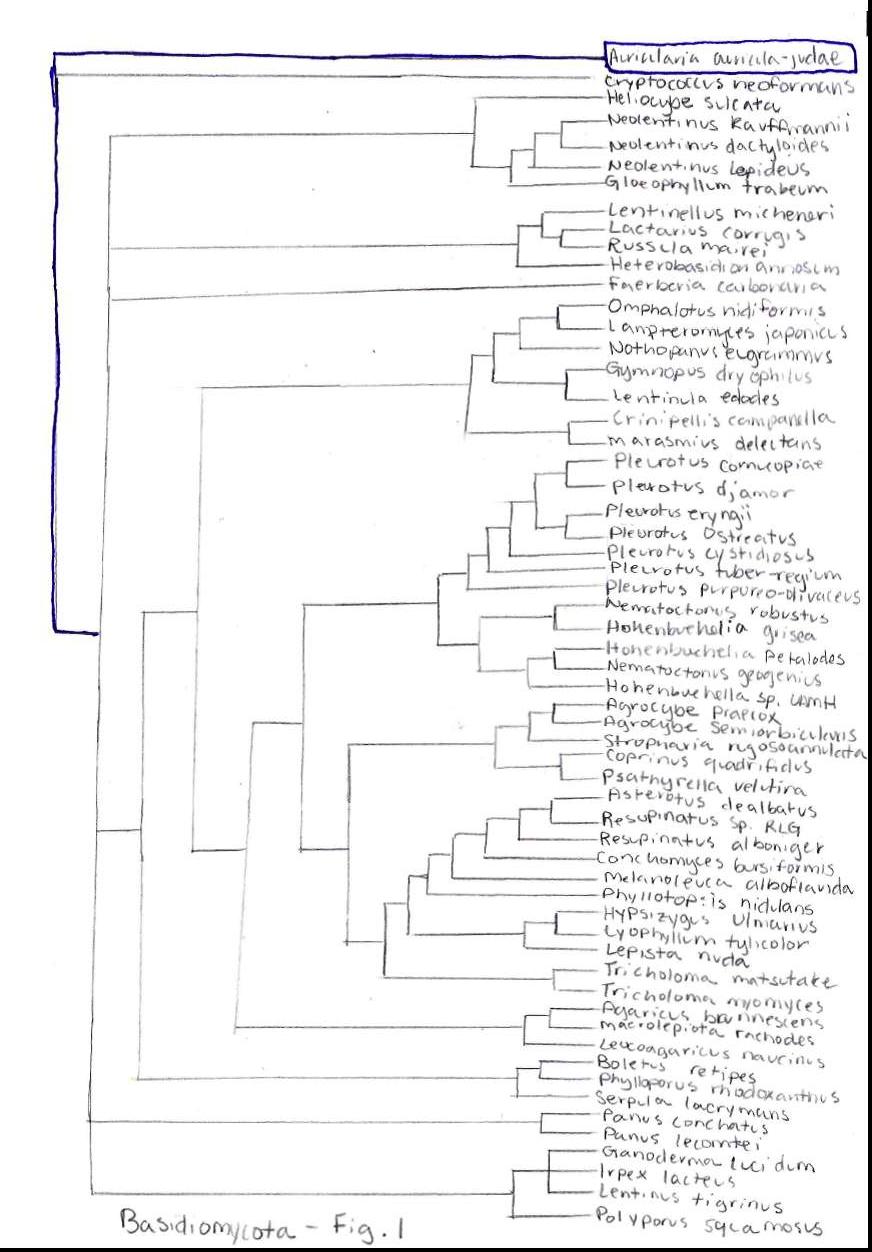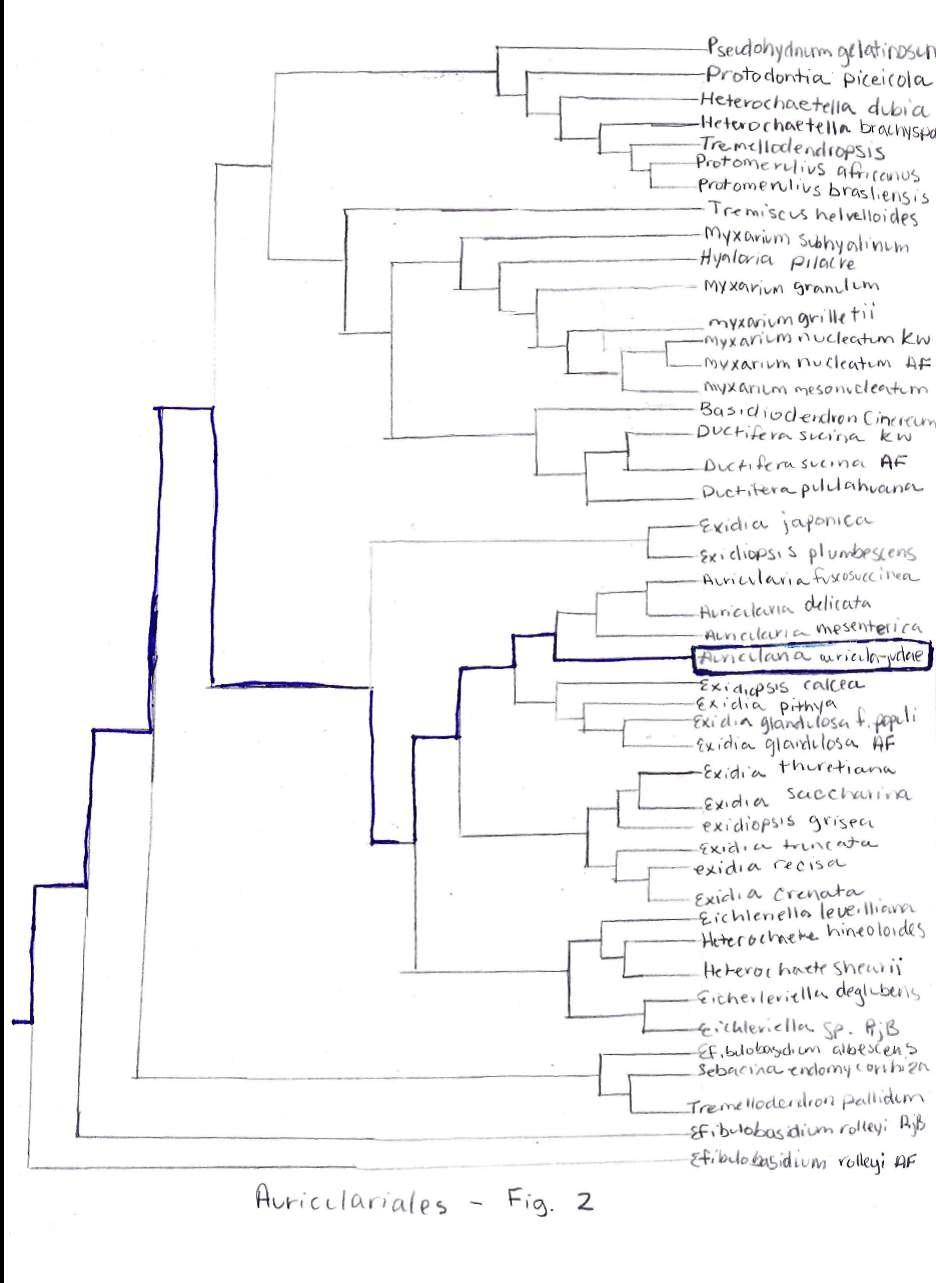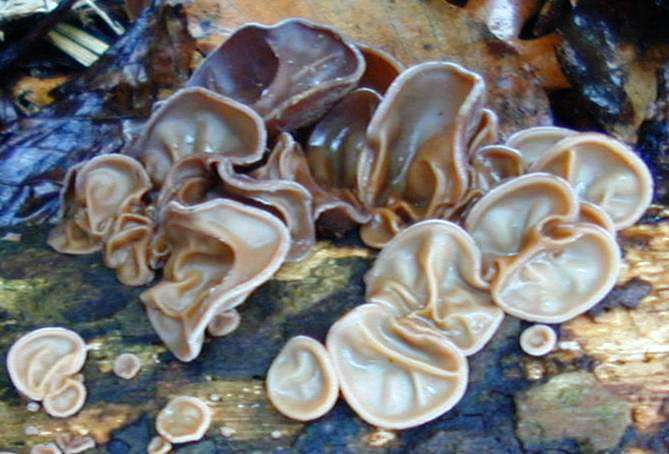Classification
| Taxonomy | |
| Domain | Eukaryota |
| Kingdom | Fungi |
| Phylum | Basidiomycota |
| Class | Agaricomycetes |
| Order | Auriculariales |
| Family | Auriculariaceae |
| Genus | Auricularia |
| Species | Auricularia auricula-judae |
This table shows the exact classification of this fungus. Every species has a background and a history on how its name was derived. Auricularia auricula-judae has its own life and background.
To begin with, we have this fungus belonging to the Domain Eukaryota also known as Eukarya.
The main characteristics seen in the organisms of this domain include membrane-bound organelles such as the chloroplasts seen in plants and nucleus that contains the genetic material of an organism which is also known as DNA (deoxyribonucleic acid.) In the following phylogeny chart, one can see where the fungi fit into the grand scheme of the domain Eukarya. It is noted that the Fungi (highlighted in red) are most closely related to animals which in fact includes humans. Crazy, huh.
This molecular phylogenic tree is based on the gene sequences that made it possible to separate organisms not only into the Eukarya domain but also Archaea and Bacteria. Remade by Ruth Gaona from (Campbell, 2008.)
Furthermore, this mushroom belongs to the kingdom Fungi (as expressed in the tree.) This kingdom's characteristics include being heterotrophs which means they cannot produce their own food. They have an interesting way of obtaining nutrients that involves the secretion of hydrolytic enzymes onto their food source. These enzymes then break down all the complex compounds into absorbable substances. The Fungi absorb the nutrients from outside their body from dead organic material. It's kind of like us...only inside out. Some fungi like the Glomeromycota use this way of obtaining nutrients to assist plants in their growth and survival. Aside from being heterotrophs, fungi can reproduce via spores by undergoing either sexual or asexual cycles. They also possess an alternation of generations which is when the life cycle undergoes both diploid, having both parent's chromosomes, and haploid, having only one set of chromosomes, stages that are multicellular.
To continue, we have the phylum of Basidiomycetes. This phylum is characterized by their importance of decomposing wood and organic material being that they especially best at breaking down lignin, a component of wood. Under this phylum, we can find the Shiitake mushroom (Lentinula edodes,) Turkey Tail mushroom (Trametes versicolor,) Split Gill mushroom (Schizophyllum commune,) and Magic mushroom (Psilocybe cubensis.) The Basidiomycetes are also characterized by the club-like shape their sexual spore-producing structures known as basidium. They also form fruiting bodies known as Basidiocarps that are dikaryotic which means that each cell contains two nuclei from both parents.
In this following phylogenetic tree, we have the relationships of Basidiomycota species based on the nuclear 25S rDNA sequences. With it, there was intensive analysis to place these specific species into clades.
As the class, we have the Agaricomycetes. In this class, there is approximately 16,000 different species (Hibbett, 2007) that are all mostly edible. Also, they are known as the ones to produce the mushroom appearance that are multicellular. Most are found terrestrially, but some are said to have returned to aquatic environments. Most groups of this class have basidia that are not divided by septa and are called homobasidia. However, some do have divided basidia like the Auriculariales.
The Auriculariales is the order under which the wood ear fungus belongs to. As mentioned above, this order is mainly characterised by having basidium divided by septa.
This phylogenetic tree was done based on the sequencing of eight collections of Auriculariales (Wells, 2004.) They used this to be able to see how a new species of Myxarium fits into the order and the species that are already there. They used morphological features and sequence analysis.
As for the family, the Auricularia auricula-judae are classified under the Auriculariaceae. This family is primarily composed of fungi that are gelatinous (jelly fungi,) and they have large spores that are shaped like a sausage. Aside from that, their lifestyle is that of a saprobe which means that it feeds on decaying wood or organic material. (Shirley, 2009.)
Now, as we look at the Genus of this fungus, we have the Auricularia. This genus consists of approximately 15 species. Its main characteristic is that they are lobed shaped like an ear.
Finally, we have our species Auricularia auricula-judae whose auricula-judae translates to "the ear of judas." Its origin is later explained in the Facts section of this web page. (Paassen, 2010)
Now that you know the classification, find out where you can locate this fungus!
Go to Habitat
Go Back Home
 Auricularia
auricula-judae
Auricularia
auricula-judae 

